Storytelling, Empathy and the Whiny Solipsist’s Disingenuous Angst
Saturday, February 13th, 2010 In the last few weeks, I’ve been reading stories nominated for the Hugo awards. One of them, the first choice of an SF/F author whose judgment I trust, gave me pause. The concepts were interesting, although the story was a variation on Total Recall. But the characters tasted like cheap cardboard and the style was equally flat. This led me to ponder yet again the much-discussed decline of SF. And from there, with the help of yet another Dr. B. (not the Dr. B. I discussed in Camels, Gnats and Shallow Graves, though they’d fall into a bromance at first sight), my thoughts segued to empathy.
In the last few weeks, I’ve been reading stories nominated for the Hugo awards. One of them, the first choice of an SF/F author whose judgment I trust, gave me pause. The concepts were interesting, although the story was a variation on Total Recall. But the characters tasted like cheap cardboard and the style was equally flat. This led me to ponder yet again the much-discussed decline of SF. And from there, with the help of yet another Dr. B. (not the Dr. B. I discussed in Camels, Gnats and Shallow Graves, though they’d fall into a bromance at first sight), my thoughts segued to empathy.
Empathy, the ability to put yourself in someone else’s shoes, neatly falls into the “feminine” virtues. Certainly, it is a requirement for successfully rearing children. It is also is a survival tactic for the powerless. So it’s not surprising that it’s a cultivated and praised attribute in women and slaves.
Three kinds of adult humans lack or have difficulty with empathy. The first group cannot help it: they are the people with autism spectrum disorders who often find it hard to understand or interpret the emotions and motivations of others. The second group consists of fundamentalists of all stripes who are convinced they verily possess the stone tablets of Truth and are ready to smash dissenters’ heads with them. [ETA: the second group includes narcissistic socio/psychopaths, who invariably regard themselves as messiahs].
Finally, we have the obnoxiously smug. Invariably these are comfortably off white men who feel free to smirk and sneer about Other’s issues, but when called on it insist that they are misunderstood free spirits persecuted by the humorless PC police. Which brings us to Dr. B.
A few months ago, a pingback showed that someone had referred to my essay The Double Helix: Why Science Needs Science Fiction. Being a curious cat, I followed the link. It led to the blog of Dr. B., an academic astronomer who also writes hard SF. He advocates science literacy, calls himself progressive… so, ever hopeful, I started visiting, happily prepared to join the conversation.
Yet almost immediately, I couldn’t help but notice that several of Dr. B.’s stances “ain’t evolved” (to paraphrase Clarence Thomas). Among them was gratuitous, strident misogyny skulking under the “fairness” veneer. The trend culminated in a recent post in which Dr. B. commented approvingly on an anonymous screed from the National Post, the Canadian equivalent of Fox News:
Women’s Studies programs removed from Canadian universities: “These courses has done untold damage to families, our court systems, labour laws, constitutional freedoms and even the ordinary relations between men and women.” I guess I don’t shed a tear if these are gone. Where are the Men’s Studies? I guess some would say every other course and department out there, but that’s not exactly fair. // Well, that should be provocative enough for some comments.
The Post article itself is the usual venomous tripe about the horrific harm feminism hath wrought, though it missed one obvious talking point – that them dastardly feminazis caused 9/11. It’s the sort of thing Marc Lépine might have written before he murdered fourteen women students of engineering in the Montréal École Polytechnique.
 Being a believer in giving people a long rope, I went through four rounds of exchanges with Dr. B. In his responses, he covered every single square of the misogynist bingo board, from the demand to “educate him” to the opinion that women bring down standards in the hard sciences, to whining about the humorlessness of feminists. The gist of his replies was: Enough about women and their imaginary problems. What about oppressed tenured white male ME???
Being a believer in giving people a long rope, I went through four rounds of exchanges with Dr. B. In his responses, he covered every single square of the misogynist bingo board, from the demand to “educate him” to the opinion that women bring down standards in the hard sciences, to whining about the humorlessness of feminists. The gist of his replies was: Enough about women and their imaginary problems. What about oppressed tenured white male ME???
People of this ilk infest self-labeled “progressive” groups – SF authors, transhumanists, “futurists”. Their mindsets are so similar that I wonder if pod-style human cloning isn’t already with us. Their sense of entitlement is as vast as that of any three-year old. They sulk and throw furniture when they’re thwarted in any way, consider their monoculture experience to be universal truth, and believe that their muddled self-serving ideas should be accepted without question because… well, because they are “liberal, leaning libertarian” (translation: it’s fine to bully Others, as long as it’s not state-imposed).
At this point, my readers will justifiably say: “Yet one more obscure navel-watcher is dragging his knuckles on the Internet. Maybe he had a messy divorce, maybe the Diversity Office in his campus took a corner office he was eyeing. Why are you wasting your time and ours on him?”
The answer is, because this man has assumed the role of thought leader and storyteller. A person with a mindset like his is highly unlikely to write absorbing fiction or convincing characters. The empathy that would make the works anything beyond a mirror of the author’s blinkered self-involvement is absent. I found one of Dr. B.’s novels on the Internet. I gave up after slogging through sixty painful pages. Bear in mind that I like hard SF, from Egan to Mixon, and I’ll endure infodumps, shallow characters and tin-ear dialogue if a story’s elements captivate me.
To write well (let alone live well), people need to have open, informed minds. What constitutes such a worldview goes beyond just imaginative extrapolations of concepts and objects. Curiosity and empathy toward others are equally crucial components. If an author can’t (won’t) do that, s/he won’t be able to create credible elves or andromedans either. By encouraging and rewarding lopsided parochialism, SF/F contributes to its own ghettoization and puts a stamp of approval on being junk-food escapism by/for the emotionally stunted.
When people in relatively privileged circumstances live as Others even briefly (John Howard Griffin comes to mind), their outlook changes radically. If I ever became Supreme Dictator, one of my edicts would be that everyone spend at least one year in another culture during their adolescence. Even a brief stay in a different environment peels away the complacency that arises from being embedded in a single context. The double vision that results from such exposure forever alters people’s perceptions. Layered, nuanced storytelling, free of navel-watching and whiny angst, can arise from these jolts.
 Most fiction works are slated for oblivion. “Cool” concepts date fast, genre fashions even faster. But storytellers who see into others’ minds create characters that haunt and compel us, whose actions and fates matter to us. Through them, they burst past genre confines to make great literature that is long remembered, retold and sung.
Most fiction works are slated for oblivion. “Cool” concepts date fast, genre fashions even faster. But storytellers who see into others’ minds create characters that haunt and compel us, whose actions and fates matter to us. Through them, they burst past genre confines to make great literature that is long remembered, retold and sung.
Passed-out-cold bookworm: Gutenberg Project.
“Tantrum” bronze sculpture: Gustav Vigeland, Oslo.
Tales from Earthsea cover: David Wyatt





 Like anyone who didn’t greet Cameron’s Avatar as The Second Coming, I received predictable responses to
Like anyone who didn’t greet Cameron’s Avatar as The Second Coming, I received predictable responses to 
 Sudden loud noises, abrupt luminosity changes, rapid irregular motion and objects fast growing in your visual field are among the triggers of fight-or-flight. Sound familiar? 3-D effects that force us to constantly flinch away from looming fronds or asteroids; car chases at a speed that our eyes can barely track; explosions, in-your-face gunshots and loud percussive soundtracks that make us jump – these are the common, blunt weapons in today’s blockbuster movie arsenal, aimed to jangle and pummel our brain into reflex mode.
Sudden loud noises, abrupt luminosity changes, rapid irregular motion and objects fast growing in your visual field are among the triggers of fight-or-flight. Sound familiar? 3-D effects that force us to constantly flinch away from looming fronds or asteroids; car chases at a speed that our eyes can barely track; explosions, in-your-face gunshots and loud percussive soundtracks that make us jump – these are the common, blunt weapons in today’s blockbuster movie arsenal, aimed to jangle and pummel our brain into reflex mode. If you think this is hyperbole, consider that Antonin Scalia
If you think this is hyperbole, consider that Antonin Scalia  James Cameron made two films that are high on my list of favorites: Terminator 2 and Aliens – not least because powerful women are central to the stories (even though he gave them the most conservative and clichéd motivation for heroism: maternal protectiveness). He was a taut, visually inventive storyteller once. But all his films after The Abyss increasingly resemble the Hindenburg: bloated, self-indulgent, lacking originality and subtlety in all but F/X.
James Cameron made two films that are high on my list of favorites: Terminator 2 and Aliens – not least because powerful women are central to the stories (even though he gave them the most conservative and clichéd motivation for heroism: maternal protectiveness). He was a taut, visually inventive storyteller once. But all his films after The Abyss increasingly resemble the Hindenburg: bloated, self-indulgent, lacking originality and subtlety in all but F/X. There’s nothing wrong with adults enjoying Disney-level spectacle, as long as they don’t make it their moral, intellectual or esthetic measuring stick. An artist with Cameron’s credibility and clout should undertake real challenges that inspire our innate desire to explore instead of recycling militaristic violence porn and preachy feel-good platitudes. He did it incredibly well before, he can do it again. And some childish dreams should remain dreams. They work far better as beckoning beacons.
There’s nothing wrong with adults enjoying Disney-level spectacle, as long as they don’t make it their moral, intellectual or esthetic measuring stick. An artist with Cameron’s credibility and clout should undertake real challenges that inspire our innate desire to explore instead of recycling militaristic violence porn and preachy feel-good platitudes. He did it incredibly well before, he can do it again. And some childish dreams should remain dreams. They work far better as beckoning beacons. The world has changed since then, the US more than most. American culture has always proclaimed its distrust of authority. However, the nation’s
The world has changed since then, the US more than most. American culture has always proclaimed its distrust of authority. However, the nation’s 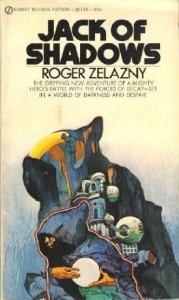 I’ve been reading SF since the early seventies, ever since my English became sturdy enough to support the habit. In both reading and writing, I favor layered works that
I’ve been reading SF since the early seventies, ever since my English became sturdy enough to support the habit. In both reading and writing, I favor layered works that  Please understand, I don’t miss the turgid exposition, cardboard-thin characters and blatant sexism, parochialism and triumphalism of the Leaden… er, Golden Era of SF (though the same types of attributes and attitudes have resurfaced wholesale in cyberpunk). My lodestars are Le Guin, Tiptree, Anderson, Zelazny, Butler, Cherryh, Scott – and Atwood, despite her protestations that she does not, repeat not, write science fiction. They all prove that top-notch SF can incorporate gendanken experiments that contravene physical laws: FTL travel, stable wormholes, mind uploading, a multiplicity of genders and earth-like planets, anthropomorphic aliens, to name only a few.
Please understand, I don’t miss the turgid exposition, cardboard-thin characters and blatant sexism, parochialism and triumphalism of the Leaden… er, Golden Era of SF (though the same types of attributes and attitudes have resurfaced wholesale in cyberpunk). My lodestars are Le Guin, Tiptree, Anderson, Zelazny, Butler, Cherryh, Scott – and Atwood, despite her protestations that she does not, repeat not, write science fiction. They all prove that top-notch SF can incorporate gendanken experiments that contravene physical laws: FTL travel, stable wormholes, mind uploading, a multiplicity of genders and earth-like planets, anthropomorphic aliens, to name only a few.


 I don’t know if any of these novels will ever get published. But these two green shoots have given me great joy and hope. It was my tremendous luck to have devoted friends who urged me to keep writing the saga; to meet Kay Holt and Bart Leib whose vision of Crossed Genres focused exactly on hard-to-categorize works like mine; and to enjoy the unwavering certainty of Peter Cassidy, who’s convinced that one day the entire saga will emerge from its cocoon and unfurl its wings. Dhi kéri ten sóran, iré ketháni.
I don’t know if any of these novels will ever get published. But these two green shoots have given me great joy and hope. It was my tremendous luck to have devoted friends who urged me to keep writing the saga; to meet Kay Holt and Bart Leib whose vision of Crossed Genres focused exactly on hard-to-categorize works like mine; and to enjoy the unwavering certainty of Peter Cassidy, who’s convinced that one day the entire saga will emerge from its cocoon and unfurl its wings. Dhi kéri ten sóran, iré ketháni.
 When I belonged to several forums, my head resembled a gull rookery, awash with noise, random peckings and guano. Facebook was by far the worst offender, even after I ruthlessly pruned my friends list to a quarter of its size. And trying to reason with loud ill-informed semi-illiterates on scientific or political threads got tedious, sort of like having to handle teenagers who seriously think they’re the first and only ones to discover — nay, invent — sex.
When I belonged to several forums, my head resembled a gull rookery, awash with noise, random peckings and guano. Facebook was by far the worst offender, even after I ruthlessly pruned my friends list to a quarter of its size. And trying to reason with loud ill-informed semi-illiterates on scientific or political threads got tedious, sort of like having to handle teenagers who seriously think they’re the first and only ones to discover — nay, invent — sex. many thoughtful, thought-provoking comments; it also attracted commenters who objected strenuously to the article without having read it. Some brandished Star Trek, The Matrix and Kurzweil’s Singularity at me as science textbooks (or gospels, take your pick).
many thoughtful, thought-provoking comments; it also attracted commenters who objected strenuously to the article without having read it. Some brandished Star Trek, The Matrix and Kurzweil’s Singularity at me as science textbooks (or gospels, take your pick). As a companion piece to Calvin’s
As a companion piece to Calvin’s 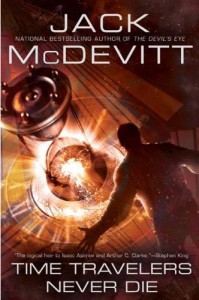 Update 1: They say good things come in threes. When I got home tonight, I found a surprise package: Jack McDevitt’s just-released novel,
Update 1: They say good things come in threes. When I got home tonight, I found a surprise package: Jack McDevitt’s just-released novel, 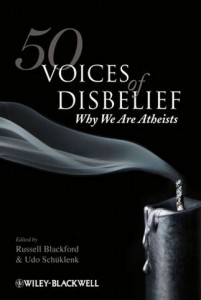 50 Voices of Disbelief
50 Voices of Disbelief One of the earliest and most lasting narrative models in science fiction is Frankenstein. The recent SciFi channel reboot of Battlestar Galactica owes itself as much to Mary Shelley as to the original 1978 television series. In the original, the robotic Cylons are creations and inheritors of a now-extinct reptilian race; in the 2003 reboot, the Cylons are our own creation. Like Frankenstein’s creature (in the novel), the reimagined Cylons are as capable of tormented philosophical reasoning as they are of homicidal rage.
One of the earliest and most lasting narrative models in science fiction is Frankenstein. The recent SciFi channel reboot of Battlestar Galactica owes itself as much to Mary Shelley as to the original 1978 television series. In the original, the robotic Cylons are creations and inheritors of a now-extinct reptilian race; in the 2003 reboot, the Cylons are our own creation. Like Frankenstein’s creature (in the novel), the reimagined Cylons are as capable of tormented philosophical reasoning as they are of homicidal rage. nt writing and acting, but by the final season Battlestar Galactica (or BSG to its friends) deteriorated into a self-parodying soap opera. We were told at the beginning of episodes that the Cylons “have a plan,” but it became increasingly clear that creator Ron Moore was making it up as he went along; by the series finale he had written the reboot’s most compelling creation, Kara “Starbuck” Thrace, into such a corner that he could only end her story by having her melt into the wind like an bad odor.
nt writing and acting, but by the final season Battlestar Galactica (or BSG to its friends) deteriorated into a self-parodying soap opera. We were told at the beginning of episodes that the Cylons “have a plan,” but it became increasingly clear that creator Ron Moore was making it up as he went along; by the series finale he had written the reboot’s most compelling creation, Kara “Starbuck” Thrace, into such a corner that he could only end her story by having her melt into the wind like an bad odor. Caprica is far better than The Phantom Menace, but that is a low bar, and neither is Caprica as compelling as the opening Battlestar Galactica miniseries. We are supposed to sympathize with Zoe’s grieving father, a Bill Gates-like character, but his distance from wife and work also distances him from the audience. Much more intriguing is Joseph Adams, a well-dressed lawyer who lost his wife and daughter in the same bombing that killed Zoe, and who is attempting to reconnect with his young son William, all the while in a dangerous dance with a Mafia-like gang from his Tauron homeworld. Young William, of course, grows up to be Bill Adama, who helps to save the human race 58 years later as captain of the Galactica. The Adama drama is much more compelling than the dull Frankenstein, I mean Greystone, family but is curiously underplayed here despite a few dramatic scenes.
Caprica is far better than The Phantom Menace, but that is a low bar, and neither is Caprica as compelling as the opening Battlestar Galactica miniseries. We are supposed to sympathize with Zoe’s grieving father, a Bill Gates-like character, but his distance from wife and work also distances him from the audience. Much more intriguing is Joseph Adams, a well-dressed lawyer who lost his wife and daughter in the same bombing that killed Zoe, and who is attempting to reconnect with his young son William, all the while in a dangerous dance with a Mafia-like gang from his Tauron homeworld. Young William, of course, grows up to be Bill Adama, who helps to save the human race 58 years later as captain of the Galactica. The Adama drama is much more compelling than the dull Frankenstein, I mean Greystone, family but is curiously underplayed here despite a few dramatic scenes.
 Two articles of mine appeared today in very different venues.
Two articles of mine appeared today in very different venues.


 I saw District 9 yesterday. This gory bore won an 88% rating at the Tomatometer? As well as rave reviews from intelligent, well-educated people across the age spectrum? Once again, as with
I saw District 9 yesterday. This gory bore won an 88% rating at the Tomatometer? As well as rave reviews from intelligent, well-educated people across the age spectrum? Once again, as with  The cruelties of segregation, the plight of refugees, our treatment of Others — those are burning subjects. So is the question of how we would interact with sentient aliens. None of them gets real treatment here. Instead, the film manipulates its viewers into feeling virtuous by being superficially “daring”. District 9 is neither science fiction nor social commentary; it’s violence porn — or, as producer Peter Jackson himself called it on io9, splatstick.
The cruelties of segregation, the plight of refugees, our treatment of Others — those are burning subjects. So is the question of how we would interact with sentient aliens. None of them gets real treatment here. Instead, the film manipulates its viewers into feeling virtuous by being superficially “daring”. District 9 is neither science fiction nor social commentary; it’s violence porn — or, as producer Peter Jackson himself called it on io9, splatstick. Several decades ago, James Tiptree Jr. (Alice Sheldon) wrote a story in which aliens eyeing the lush terrestrial real estate introduce something in the water or the air that makes men kill women and girls systematically, rather than in the usual haphazard fashion. Recent events have made me wonder if a milder version of Tiptree’s
Several decades ago, James Tiptree Jr. (Alice Sheldon) wrote a story in which aliens eyeing the lush terrestrial real estate introduce something in the water or the air that makes men kill women and girls systematically, rather than in the usual haphazard fashion. Recent events have made me wonder if a milder version of Tiptree’s 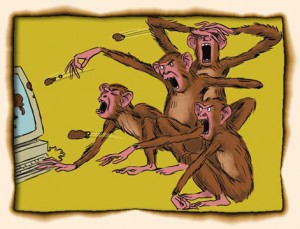 Of course, parity is not even remotely demanded — a mere one or two representatives often suffice as a sop (to such lows have we fallen). The bleatings about qualifications and tokenism are absurd, given the vast, stellar non-male non-white talent pool. The excuses sound even lamer (if not malicious) when one scans the predictable, often mediocre, rolodex-friend picks actually made in cases 1 and 2 above… and in more instances than I care to recall at other times.
Of course, parity is not even remotely demanded — a mere one or two representatives often suffice as a sop (to such lows have we fallen). The bleatings about qualifications and tokenism are absurd, given the vast, stellar non-male non-white talent pool. The excuses sound even lamer (if not malicious) when one scans the predictable, often mediocre, rolodex-friend picks actually made in cases 1 and 2 above… and in more instances than I care to recall at other times.
 A story of mine,
A story of mine, 

 A recent entry by Mike Treder at the IEET site (Institute of Ethics and Emerging Technologies)
A recent entry by Mike Treder at the IEET site (Institute of Ethics and Emerging Technologies)  About a week ago, the Internet went wild with the announcement that a “fountain of youth” drug had been found that extends life by about 10%. I picked a site at random and read the report, knowing full well what I would find buried somewhere in the story. Sure enough, there it was, tucked at the end of a paragraph halfway down: the study was done on mice.
About a week ago, the Internet went wild with the announcement that a “fountain of youth” drug had been found that extends life by about 10%. I picked a site at random and read the report, knowing full well what I would find buried somewhere in the story. Sure enough, there it was, tucked at the end of a paragraph halfway down: the study was done on mice.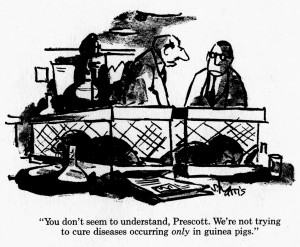

 Yours truly
Yours truly